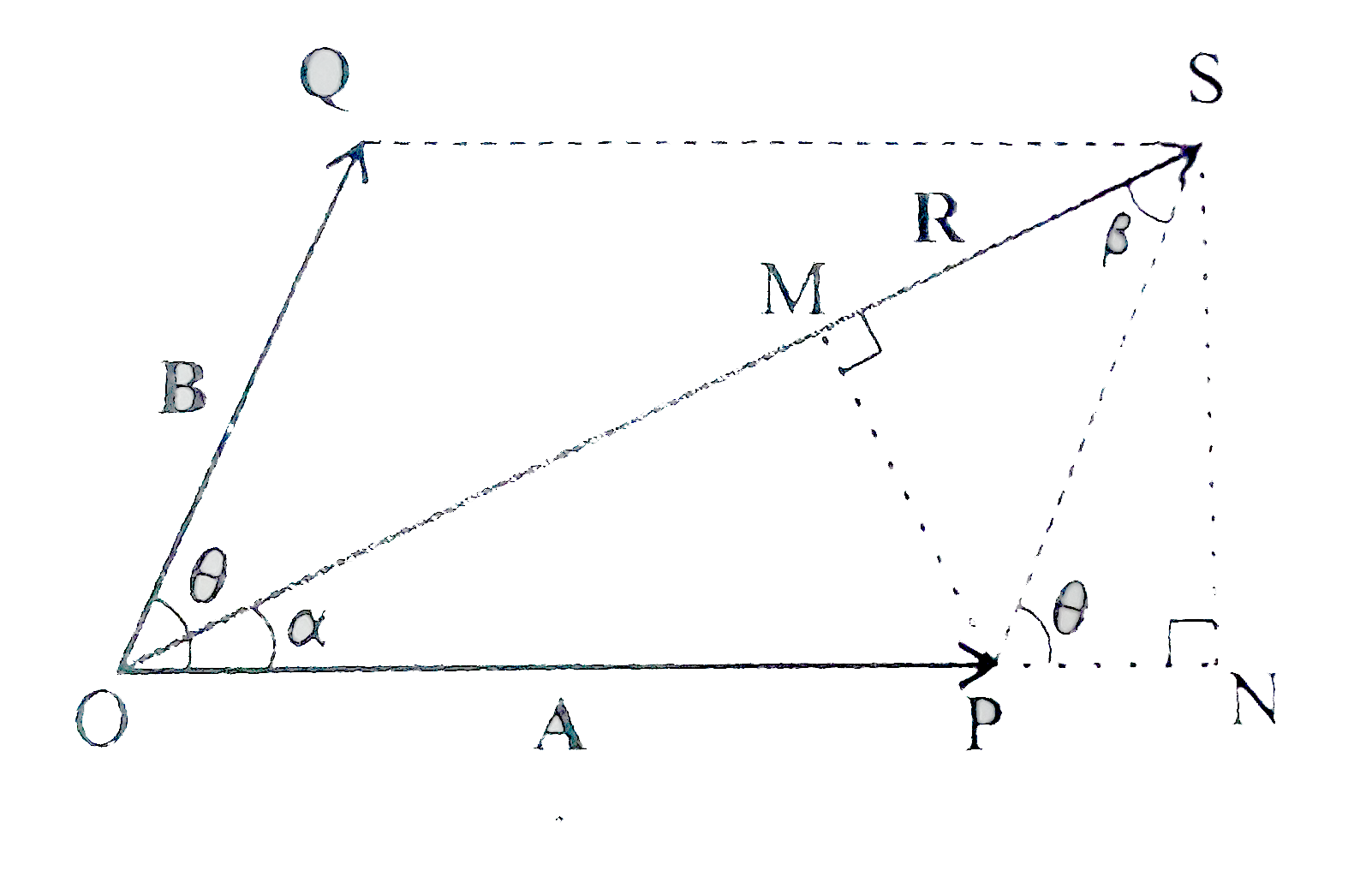State parallelogram law of vector addition. Find analytically the magnitude and direction of resultant vector. Apply it to find the resultant when,
(i) Two vectors are parallel to each other
(ii) Two vectors are perpendicular to each other
Step-by-Step Solution
Step 1: State the Parallelogram Law of Vector Addition
The Parallelogram Law of Vector Addition states that if two vectors →A and →B are represented as two adjacent sides of a parallelogram, then the resultant vector →R can be represented by the diagonal of the parallelogram that starts from the same point. Mathematically, the magnitude of the resultant vector can be expressed as:
|→R|=√|→A|2+|→B|2+2|→A||→B|cosθ
where θ is the angle between the two vectors.
---
Step 2: Finding the Magnitude and Direction of the Resultant Vector
To find the magnitude and direction of the resultant vector →R:
1. Magnitude: Use the formula stated above.
2. Direction: The angle α that the resultant vector makes with one of the vectors (say →B) can be found using the tangent function:
tanα=|→A|sinθ|→B|+|→A|cosθ
---
Step 3: Apply to Specific Cases
(i) When Two Vectors are Parallel to Each Other
If →A and →B are parallel, then θ=0∘.
- Magnitude:
|→R|=√|→A|2+|→B|2+2|→A||→B|⋅1=|→A|+|→B|
- Direction: The resultant vector →R will be in the same direction as →A and →B.
---
(ii) When Two Vectors are Perpendicular to Each Other
If →A and →B are perpendicular, then θ=90∘.
- Magnitude:
|→R|=√|→A|2+|→B|2+2|→A||→B|⋅0=√|→A|2+|→B|2
- Direction: The angle α can be found using:
tanα=|→A||→B|
The resultant vector →R will be at an angle α with respect to →B.
---
2. Direction: The angle α that the resultant vector makes with one of the vectors (say →B) can be found using the tangent function:
|→R|=√|→A|2+|→B|2+2|→A||→B|⋅1=|→A|+|→B|
|→R|=√|→A|2+|→B|2+2|→A||→B|⋅0=√|→A|2+|→B|2
tanα=|→A||→B|
Similar Questions
State triangle law of vectors addition. Find analytically the magnitude and dirction of resultant vector.
View SolutionState parallelogram law of vectors addition .Find analytcallly the magnitude and direction of resultant vector, When (i) two vectors are parallel to each other (ii) two vectors are perpendicular to each other.
View Solution
Knowledge Check
Two vectors →P and →Q that are perpendicular to each other are :
A→P=3ˆi+3ˆj+2ˆk,→Q=2ˆi−2ˆj+2ˆkB→P=2ˆi+3ˆj+2ˆk,→Q=2ˆi−2ˆj+2ˆkC→P=2ˆi−3ˆj+2ˆk,→Q=2ˆi−2ˆj−2ˆkD→P=ˆi−3ˆj+2ˆk,→Q=2ˆi−2ˆj+ˆkIn parallelogram law of vector, the direction of resultant vector is given by
Atanα=QcosθP+QsinθBtanα=QsinθP+QcosθCtanα=PsinθP+QcosθDtanα=PcosθP+Qcosθ
Magnitude of addition of two vectors
View SolutionTwo vectors →a&→b have equal magnitudes of 10 m ,. Find the magnitude and direction of the resultant vector .
View SolutionFind the magnitude and direction of the resultant of two vectors A and B in the terms of their magnitudes and angle θ between them.

View SolutionThe sum and difference of two vectors are perpendicular to each other. Prove that the vectors are equal in magnitude.
View SolutionFor the vectors →Aand→B in the above example , find unit vector parallel to the resultant of the two vectors
View SolutionIn Q-2, if vectors are perpendicular to each other then find the value of λ.
View Solution
